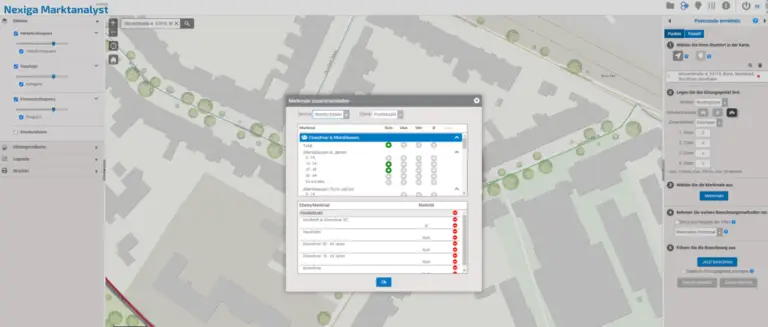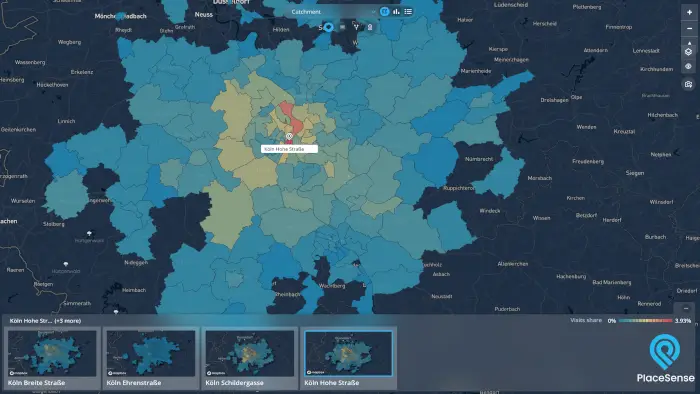The question of where is the all-important question and, when it comes to location planning, belongs in every strategic toolbox.
In order to identify potential around a location, to better understand the target group in the catchment area or to keep an eye on the competition in the surrounding area, data with a spatial reference is required. Here, the more granular the level on which the detailed analysis is based, the more well-founded the findings about locations and their catchment areas. In addition to marketing-specific data such as socio-demographic and consumption-related information, data that reveals more about frequencies and visitor flows at a location is also of the utmost importance.
Combine static data with dynamic data
In order to define the right location criteria for expansion planning, it is necessary to consider each industry with its individual challenges, as these can vary from case to case.

What is considered the "best location" for one person, such as the city center, may mean the greenfield site with a large area and parking facilities for another. Knowledge about accessibility, such as public transport connections or the type of transport the customer uses to get to the store, can also be characteristic for further decisions. Different travel distances, which are to be evaluated depending on the product, because they serve daily needs, or even mean larger purchases and investments, also play a serious role. The choice of location should therefore be secured by a well thought-out network of many factors.
With target group analyses revealing diverse information about the behavior and origin of potential customers, digital twins also become a helpful tool. In this way, people with the "same structure" can be defined and identified by "clustering" them in different locations (they thus exhibit the same pattern). So if a store is already performing well in Frankfurt, the location for Hamburg or other cities and areas can also be determined on the basis of similar conditions and identical criteria.
Today, GPS technology is increasingly being used to link static data with dynamic data in a meaningful way. In the process, movement data collected anonymously from apps by millions of users in Germany and also Europe are combined and can be used for in-depth analyses. Actual movement information is essential due to changing external circumstances, such as the impact of visitor behavior in the pandemic. The set of data what is available from this makes visualization imperative for understanding.
Application example store opening in the city center
Using the practical example of a confectionery supplier, we show in the following video recording the challenge of an expansion management for the choice of location in the center of Cologne. The decisive factor for the opening of a new store was the search for the best-frequented location. This was to be done taking into account regional (and not exclusively local) catchment areas. With the help of a visualization tool, it quickly became clear that the exact location was essential for the decision, since a shift or distance of 150 meters can already mean serious frequency losses.
The "perfect" location could be determined quickly and easily based on the dynamic visitor numbers and their origin for the "candyshop". Store management and marketing were also to benefit from the data load in order to be able to influence and react to the visitor flow with possible measures. Based on the located competitor locations, the market share for the company could be analyzed precisely.

The distribution of the total potential inhabitants in the catchment area (e.g. Postal code) only had to be set in relation to the actual number of visitors. How and where the individual stores perform in terms of the flow of movement in the local and regional areas becomes apparent through the daily updating of the data and offers the opportunity for active interaction in the low-traffic areas, for example. This can be done by time of day, days of the week, and by the hour.
The added value of combining Nexiga's static market and geospatial data with PlaceSense's dynamic data is obvious. In combination, a unique knowledge is created to better profile the visitors at the location and to categorize them according to corresponding target groups. In this way, targeted measures focused on sales and turnover can be sensibly implemented at the location.

